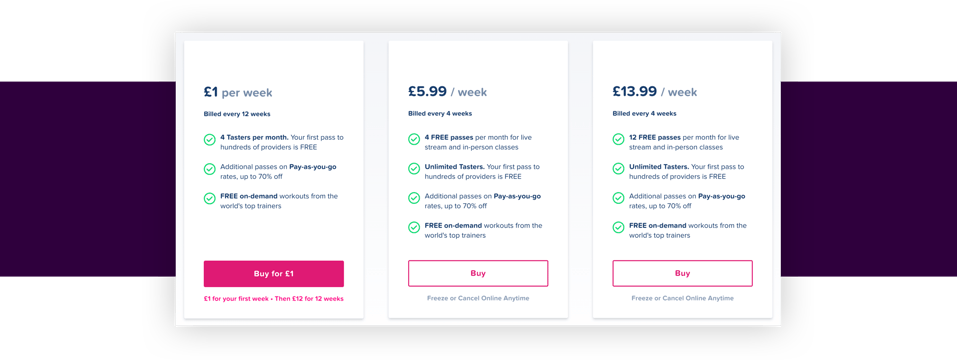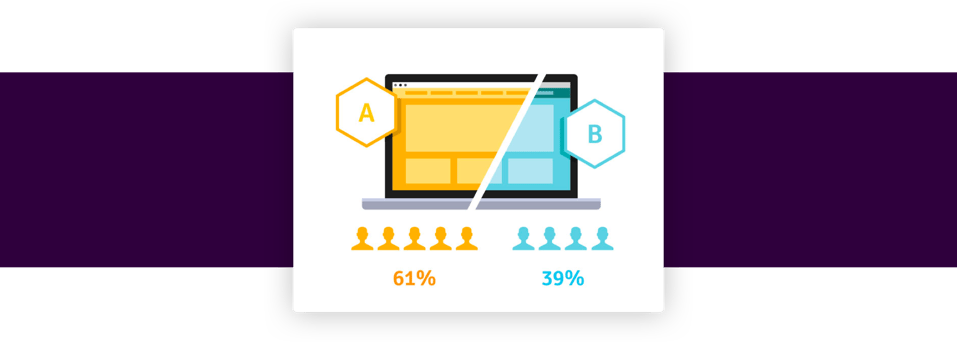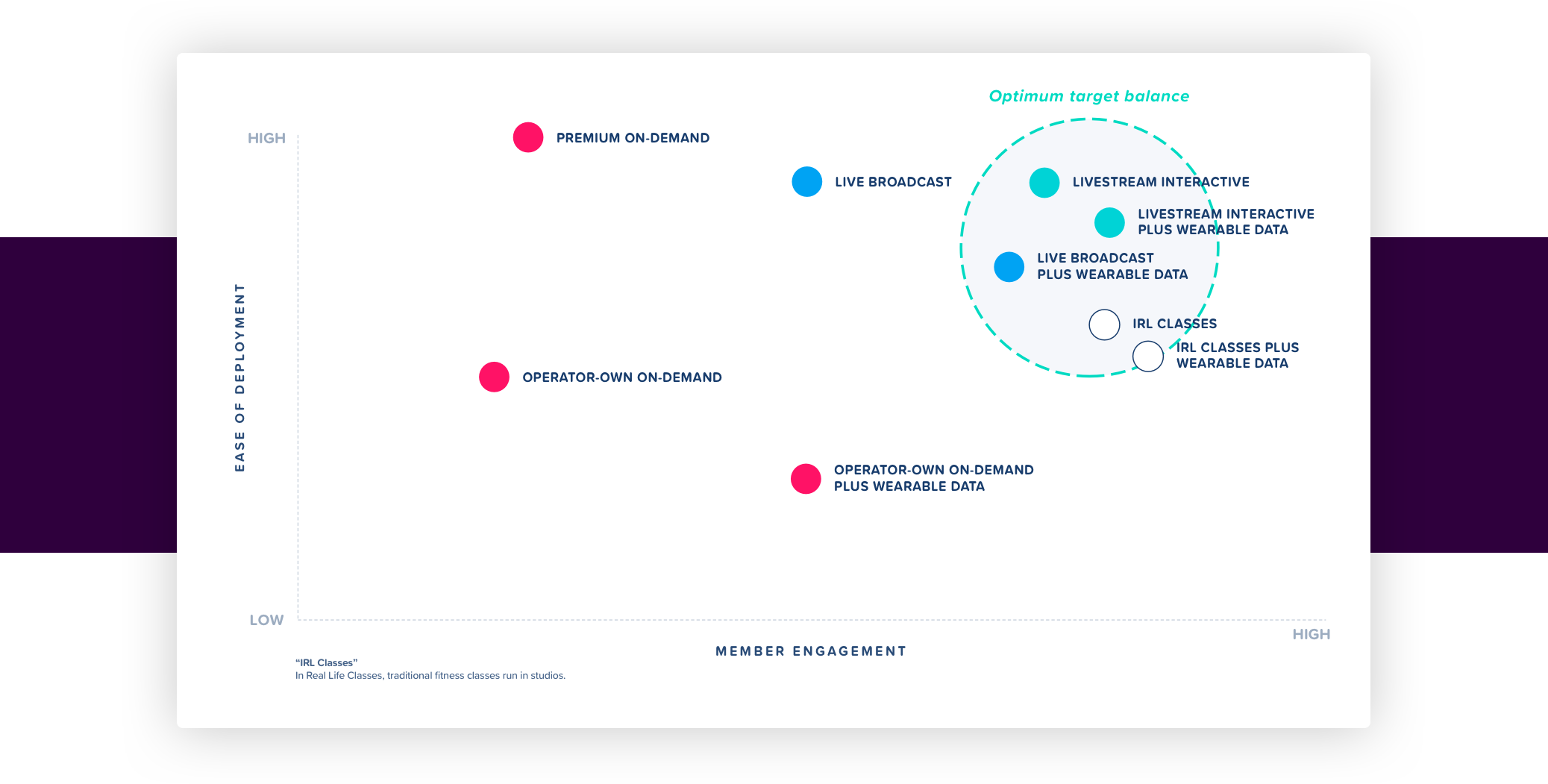10 questions operators should ask when considering digital content platform partners
WORLD-CLASS DIGITAL EXPERTISE
We’re one of the leading consumer digital technology experts in the health and fitness industry. We invest millions in the Move platform per year focussed on:
CRO (conversion rate optimisation)
ARPU (average revenue per user)
Optimisation and Retention (behaviour change and nudging)
1. Can the platform be used on laptop and mobile?
UX in both web and mobile app deployment is critical as over 95% of ‘at-home’ fitness classes are purchased via a laptop/desktop, and over 70% of live-stream classes are viewed via laptop (vs mobile).
2. Can the platform monetise the user with flexible methods of revenue generation?
(ie PAYG, tiered memberships, upgrade nudging).
You wouldn't open a new venue by committing to only being able to offer a singularly priced membership, so why would you risk entrapping yourself in future by doing so when launching a digital offering?
By building in flexibility to your methods of revenue generation, you are future-proofing yourself against the rapid changes that can take hold of both the industry and the digital economy.

3. Can the platform integrate with your existing membership management or booking solution, as well as with wearable brands and video streaming solutions?
Customer experience expectations have never been higher as they are used to the high quality and frictionless digital experiences with leading digital brands like Amazon, Google and Uber.
Displaying leaderboard and effort data live in class drives up engagement and long term retention. High quality, reliable video streaming with intuitive functionality is now also firmly part of that expectation.
The platform must deliver on all these fronts.
4. How secure is the platform?
Mitigating any concerns over security issues and unauthorised access is similarly important.
Control of camera view, dynamic URLs and secure payment processing are just three of the essential elements that must be included in the platform’s capabilities.
5. Does the platform provider have a demonstrable, in-built and on-going commitment to testing, improvement and development?
Data-drawn insights, frequent A/B testing and feedback loops (user review prompting and collection) should be built into the product development and deployment cycle of any digital product, but especially platforms like these.
Tests should even extend to include the impact of copy, button sizes, CTAs (calls to action) and colours to optimise conversion at every stage.
Small changes can have huge echo effects. For example, a 1% improvement in conversion rate in the context of 10,000 visitors a month will lead to 100 new sales a month.

6. What digital tactics are available to drive acquisition, activation, revenue and retention (AARR)?
One of the most powerful features of a digital platform is in letting the ‘product’ do the selling using purchase-psychology and product-nudging.
Class booking systems should include behavioural change elements including push notifications, ‘book again’ or ‘quick book/start’ nudges, and personalised recommendations.
You will also require the ability to deploy loss aversion tactics like no-show and cancellation fees, online credit, reminders and calendar sync all working together to increase customer commitment and retention.
User insight and review collecting functions help customers navigate to the most popular classes quickly but they serve a deeper role by providing ‘social proof’ - one of the most powerful digital purchasing psychology tactics. They also deliver valuable insights to help continually improve the quality of a digital offering.

7. What metrics does the supplier of the platform advocate and use to measure success?
Smart digital product design uses psychology, behaviour change nudges and continual A/B testing to optimise the AARR ‘funnel’ (acquisition, activation, revenue, retention). The key metrics that determine the success of the AARR funnel are:
CRO (conversion rate optimisation)
% sign up to book within seven days
% repeat book within seven days
WACs ( weekly active users )
ARPU (average revenue per user)
Cohort decay/retention charts (by lead source, month, activity, geography)
8. Does the platform offer on-demand, livestreaming or both?
Although both content types (on-demand and livestreaming) offer the benefits of providing variety and convenience to the user, livestreaming brings more advantages that can drive better customer engagement and value in the long term.
That is because the booking appointment drives motivation to attend, the interactive and conversational functionality allows for direct communication in real-time, and the nature of ‘live’ delivers an energising effect that no recorded content can replicate.
Ideally your platform will be able to deliver both content types but live-streaming should be your preferred option.
9. What added value or opportunities for incremental revenue does the platform bring to your existing (bricks and mortar) inventory?
The proposition afforded by the platform is a route to being able to offer digital or blended experiences to your customers. But that’s where the value provided by the mainstream and ‘off-the-shelf’ ‘bolt-ons’ ends.
You should look for platforms that carry additional value by offering optional access to new customer segments via a marketplace model.
Having the additional option to offer marketplace content to your customers can power sales and retention increases.
Indeed, given that ukactive research (Member Choice Report 2020) now demonstrates that if customers are given access to a variety of activities, even across different operators, they return better lifetime value through increased frequency of attendance and longer tenures, you could use the opportunity of a platform partnership to offer that increased variety to your customers through a marketplace model.
It’s therefore worth asking whether offering your own content into a marketplace to gain incremental revenue is possible, and equally if offering marketplace content to your customers can be activated, this would be very beneficial.
10. What additional content, tools and resources are available to support operators with livestream delivery?
The platform in itself is not enough. The vendor should have a comprehensive set of tools, resources and practical guides that help operators navigate the technical aspects of quality livestream delivery as well as the craft. That includes supportive materials on lighting, sound, music, environment setup and equipment that can enhance the overall experience.
